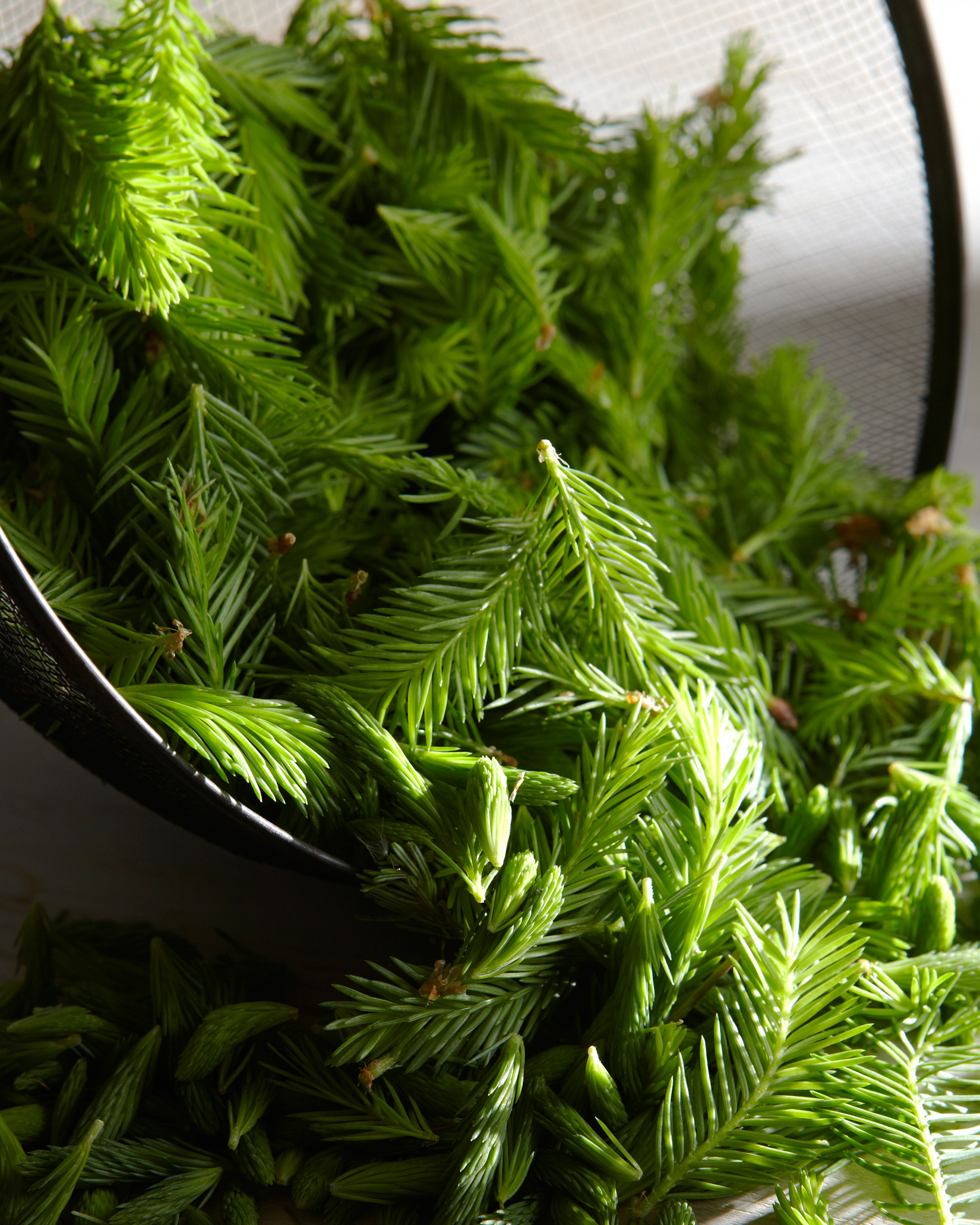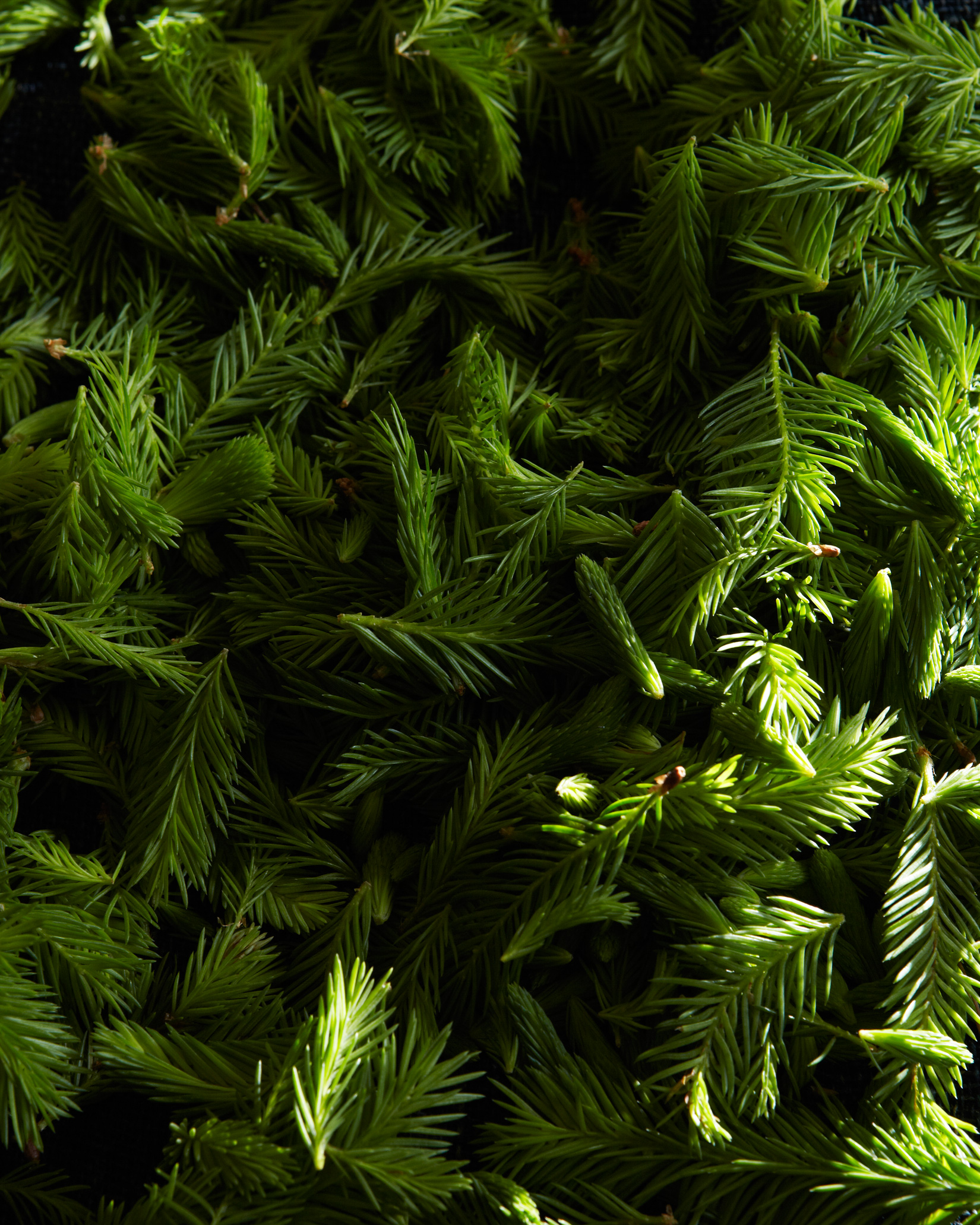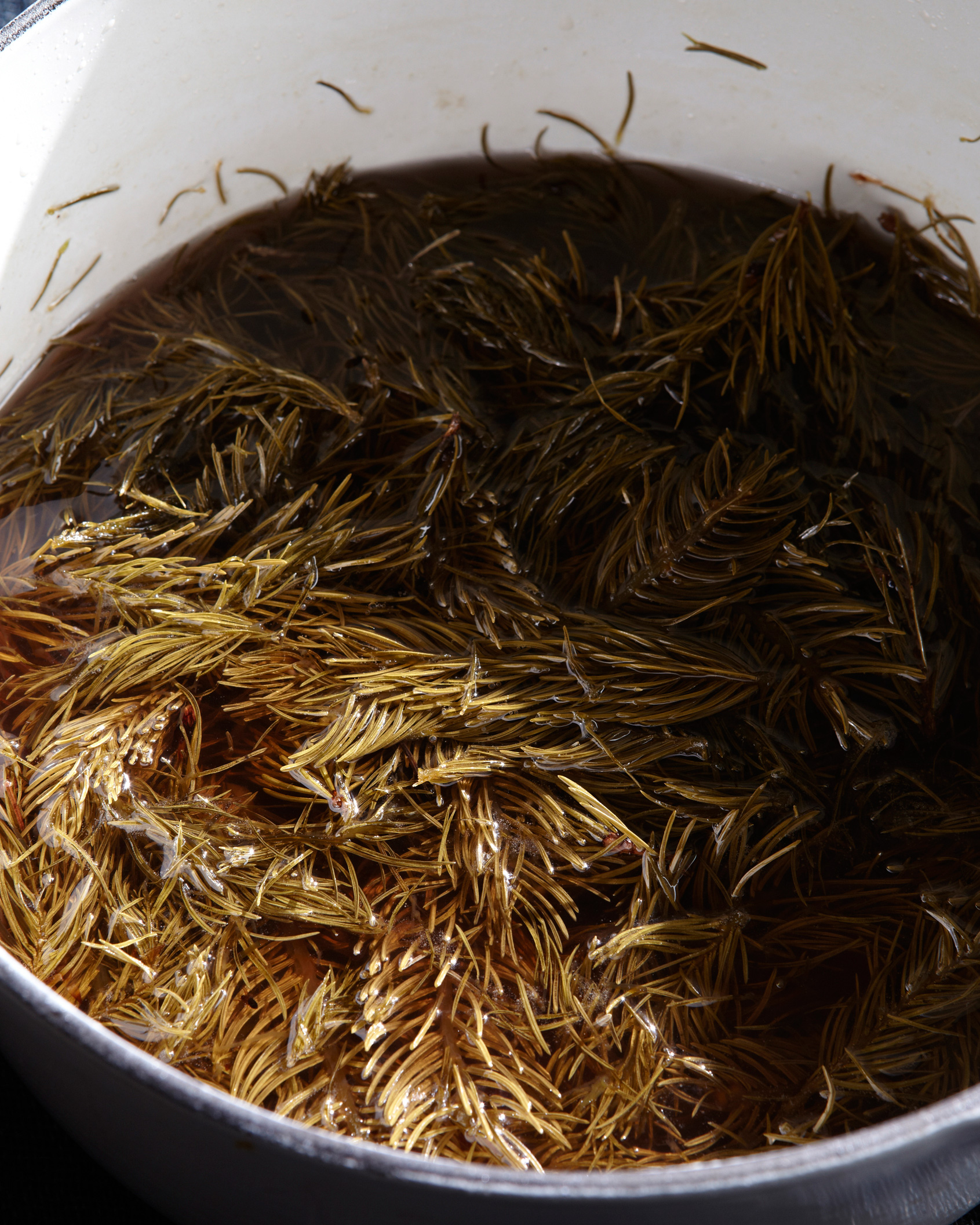where the wild things are. the blue pearl.
 11.24
11.24
One afternoon, a couple years ago, around a tiny fire outside their farmhouse in Southern Vermont, Les Hook and Nova Kim cooked up some wild mushrooms we had gathered that morning nearby. In a large cast iron pan, they seasoned them with nothing more than a little butter or olive oil and some salt and pepper. It had just begun to snow steadily when we set out to gather. Large fat flakes floated around us amd landed on our eyelashes.Les pulled over in his red Subaru, flashers glowing in the wild flurry of white. He deftly put up a twenty-foot ladder against a slippery maple tree and quickly climbed up. He pulled of the biggest Blue Pearl Oyster Mushrooms I have ever seen off that tree. We drove back to their place and lit the fire. It was then that Nova told us about her non-turkey, perfect for vegetarians on turkey day or for any feast any time of the year for that matter. You must start with a large fan of a mushroom, as you can see from the photo it kind of sweetly resembles a turkey's tail! Though I have roasted many a mushroom from them, it took me two years to get to this post. I asked Nova to save me a large Blue Pearl that I would pick up from the New Amsterdam Market. Luckily my snail mail reached her in time and I was able to get a beauty from them the Saturday before Thanksgiving. I kept in a paper bag on my fire escape until cooking day. Now I know I have sung their praises before but people, if you have not been to the market on a day when they are there then you are SERIOUSLY missing out. If you are interested in finding out when The Vermont Wild Food Gatherer's Guild will be in town go to The New Amsterdam Market website and check the vendor and calendar listings! They always have something special and if you have never been to the market then what are you waiting for? It is every Sunday from 11-4pm.
Back to the mushrooms...
The mushroom I got from Les and Nova was held together by a stretch of bark. I left the piece of bark on the mushroom while I roasted it.
I brushed the mushroom with a generous amount of olive oil and sprinkled it with French sea salt cracked black pepper and thyme.
I put in my largest Cast iron pan...this was a BIG mushroom 14 inches across at least. I threw it in the oven at 350 degrees for a slow roast and when it started to brown at the edges I put about a 1/4 cup of water in the pan and covered it with tin foil to add a little more moisture. Mushrooms are essentially like sponges so they soak up all that moisture. I may not have needed to do this if I had roasted it right away but since I had waited a few days I thought it might help to add the additional moisture.. I took the tin foil off for the last five minutes or so of cooking. I can't give you a specific cooking time because it depends on how big or small the mushrooms are that you are roasting. So use your intuition. You want it to be moist and almost meaty when you slice it.
We loved this so much that we could almost forego the turkey next year and just eat this!
It was really good with gravy...
Thank you Nova for this brilliant idea!
Roasted Wild Blue Pearl Mushroom Tail
Set your oven to 350 degrees
1 large Blue Pearl Mushroom fan approx 12-14 inches in length
1/4- 1/2 cup olive oil brushed and drizzled on the mushroom
Seas salt to taste
Cracked black pepper to taste
Sprigs of Fresh Thyme
Gently brush any dirt or debris off the mushroom with a small mushroom brush or a small pastry brush
Place the mushroom upright in a large roasting pan or cast iron skillet
Brush and drizzle with olive oil. Mushrooms really soak it up so be generous with your application.
Sprinkle with sea salt and cracked black pepper
Add some fresh thyme leaves and a sprig or two for looks
Place in the preheated oven and roast for 15-20 minutes depending on the size of our mushroom.
Put about a 1/4 to 1/2 cup of water in the pan and cover with tin foil
When the water is all evaporated the mushroom will be done.
Uncover for the last five minutes or so.
The mushroom should be moist and easy to slice along the grain.
Cooking time really depends on the mushroom size so keep and eye on it!@ You don’t want it to be too tough!!!
As always, a word of caution where wild mushrooms are concerned. Leave the gathering to an expert!!




 andrea gentl,
andrea gentl,  gentl and hyers photography,
gentl and hyers photography,  hungry ghost food and travel,
hungry ghost food and travel,  hungryghostfoodandtravel,
hungryghostfoodandtravel,  les hook,
les hook,  new amsterdam market,
new amsterdam market,  nova kim,
nova kim,  thanksgiving,
thanksgiving,  the vermont wild food gatherer's guild,
the vermont wild food gatherer's guild,  wild foods,
wild foods,  wildcrafting in
wildcrafting in  autumn,
autumn,  farmers market,
farmers market,  food,
food,  vermont,
vermont,  where the wild things are,
where the wild things are,  wildcrafting
wildcrafting 




















